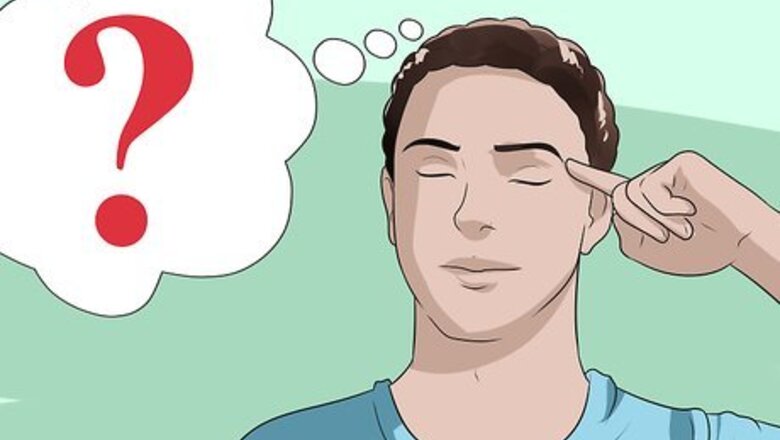
views
X
Research source
These cravings can be hard to overcome. But, with some willpower and few simple tricks, you can do it.
Changing your Thinking
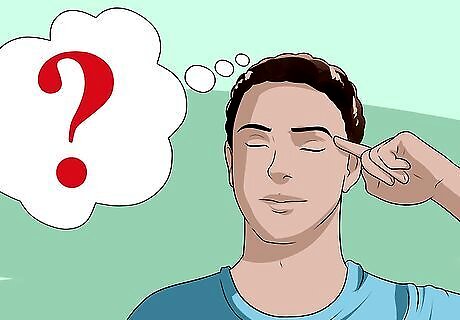
Be mindful. When you experience a food craving, stop for a moment and observe your own thinking and responses. Research shows that taking a moment to stop and recognize your mental and physical state can cause cravings to dissipate. Stop and ask yourself: why do I want this? What exactly am I feeling right now? This may not always work. But, at least in some cases, pausing to scrutinize your thought patterns can lead to healthier decisions. It can also help to take a moment to inventory, mentally, what you've already eaten that day. Often, this can trigger your brain to feel satisfied, rather than longing for more.
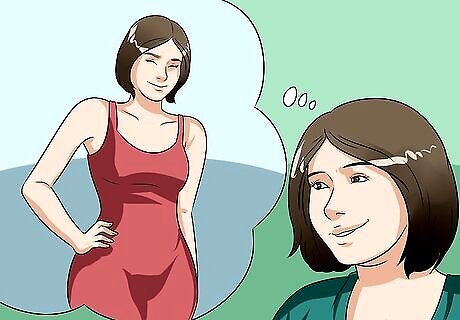
Visualize rewards. Other psychological research shows that visualizing desired behavior can help you follow through on it. Pause for a moment and try to imagine, as vividly as you can, the rewards of making the right decision. For example, imagine yourself ten pounds lighter, and what you will look and feel like if you consistently eat a healthy diet.
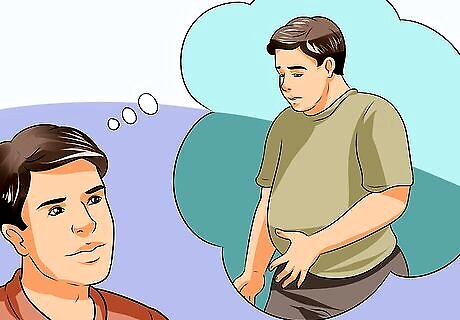
Visualize consequences. Similarly, some have suggested the visualizing the negative consequences of bad decisions can help people make good ones. For example, imagine finding out you have diabetes, imagine yourself having a heart attack or a stroke or imagine yourself 20 pounds heavier. This may seem severe. After all, one bowl of ice cream isn't going to make you diabetic. But, exaggerating the harm of the unhealthy choice can make it less appealing. Also keep in mind that this is not about shaming yourself. Neither your current nor your appearance is the focus here. Rather, the idea is make the consequences of your decisions vivid. The goal is to help you make good choices, not feel bad about yourself.
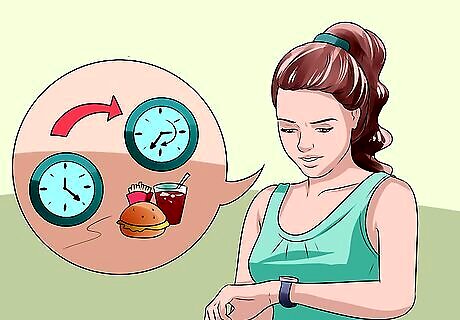
Postpone, don't deny your cravings. When you are craving something unhealthy, don't tell yourself "no." Instead, tell yourself, "maybe I'll eat it later." Psychological research shows that often, deciding to eat something later on is enough to stop the craving. Chances are, in a short time, the craving will have passed. By saying "later" instead of "no," you trick your brain into letting you make the right decision. You can say "no" when you aren't experiencing the craving anymore.
Changing your Habits
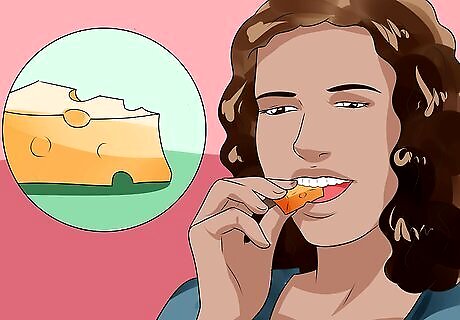
Replace your cravings. If you are genuinely hungry, it's okay to eat! But, instead of eating cookies or potato chips, make yourself a healthy snack. This can be doubly effective if you can identify your cravings. A particular food craving might point to something lacking in your diet. For example: A chocolate craving might suggest you need magnesium. Instead, try snacking on natural fruits, nuts, leafy greens, or take a vitamin/mineral supplement. A craving for sugar or simple carbohydrates (like white bread) might suggest your body needs protein or complex carbohydrates for energy. Carbohydrates break down into sugars. Since sugar metabolizes quickly, it is not a good source of long term energy. The best sources of energy are protein and complex carbohydrates, which break down more slowly. Good examples include brown or wild long-grain rice. Pasta or bread made from whole wheat flour are also good options. For protein, nuts, cheese, low-fat milk, beans, or lean meats are good choices. A craving for fried foods might suggest a need for good fats, like Omega 3 fatty acids. Try eating more fish, or check your grocery store for milk, cheese, or eggs containing these oils. You can also take a fish oil supplement if you don't like to eat actual fish, or incorporate flaxseed in your diet by mixing it into muffins or oatmeal. Walnuts and fresh basil are also sources of omega-3 fatty acids. A salt craving might mean you are lacking important electrolytes like chloride, calcium, sodium, and potassium. You might also need hydration, or vitamin B. When you desire something salty, try a glass of water. If this doesn't work, a banana and some yogurt might do the trick. If you have these cravings frequently, you may wish to try taking a vitamin B supplement or multivitamin.
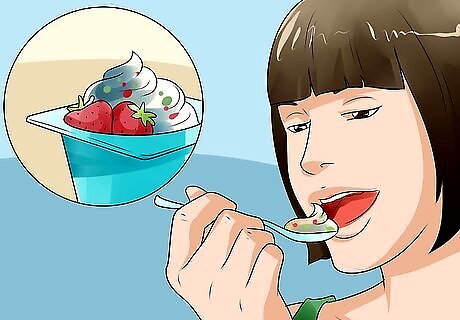
Choose healthy snacks. When you do have a snack, try to choose healthy options that satisfy the same snacking desires. For example: For a salty crunch, try popcorn instead of potato chips. Fresh, air-popped corn is best, but if you opt for microwave popcorn, pick a low fat variety. If you are craving some candy, try some trail mix with dried fruit and maybe a few chocolate chips. This can be a good source of complex carbohydrates and healthy fats. Or, have a little piece of dark chocolate. It's lower in sugar, and high in healthy antioxidants. If you want French fries or onion rings, try some lightly salted edamame, which is high in fiber and protein. Or, fix yourself a baked potato for few calories and more fiber. If you're dying for some ice cream, try a sorbet or frozen yogurt. These are still high in sugar, so don't go crazy. But, these options have a lot less fat--often none at all.
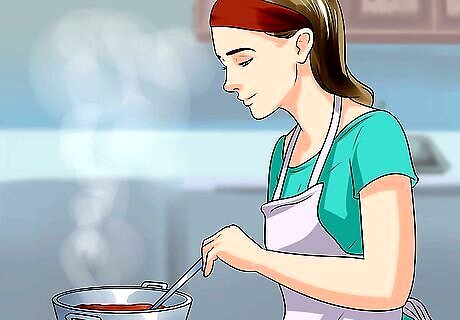
Cook your own meals. Restaurant meals, and especially fast food, are full of salt and other unhealthy ingredients. Making your own healthy and tasty meals will help you resist the cravings for restaurant food. Pack a lunch when you go to work. If you have your own healthy food, you'll be less tempted to grab a quick bite at a drive-thru, or to have the pizza your co-workers ordered.

Distract yourself. When you feel a food craving coming on, try to occupy yourself with something else. Ideally, you could make this a healthy activity, like going for a walk around the block. But, you could also call a friend or work on a project around the house. Food cravings are often triggered by boredom or fatigue. Keeping yourself occupied will help ward off either of these.

Get plenty of sleep. Sleep deprivation causes your body to need (and crave) more calories to keep going. It has been linked to cravings for junk food. Getting a good night's sleep should reduce unhealthy food cravings. Likewise, sleep deprivation can weaken your willpower, making it harder to resist cravings.
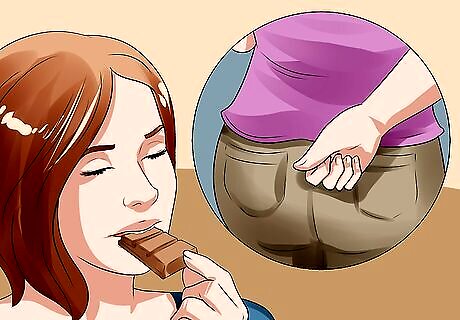
Break the routine. Psychological research shows that a lot of snacking occurs in an absent-minded way, as part of a routine. Breaking these routines can help reduce cravings. If you often eat a snack when you watch TV, you may start to want a snack every time you watch TV. Try to be aware of these routines and break them. You can do this by changing the physical space. For example, you might move your TV to another room for a while. This change will weaken the association between TV and snacking. You can move it back once you've broken the habit. Studies also show that eating snacks with your non-dominant hand will mean you eat less and will also weaken these habits. So, if you give in and snack, give it a try.
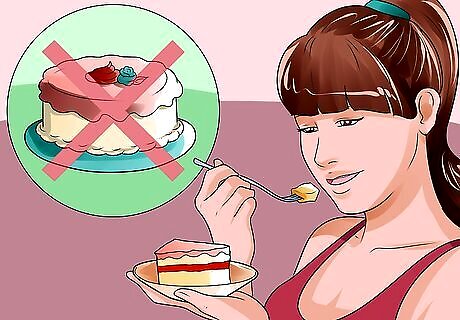
Celebrate in moderation. Tasty but unhealthy foods are part of many of our celebrations. Whether it's birthday cake or pumpkin pie around the holidays, sweet and fatty foods go with good times. Try to moderate how much of these things you eat. Not many people are likely to turn down a slice of cake on their birthday. Go ahead and have a piece! But keep in mind, it doesn't have to be a huge piece. You can take part in the celebration (and often satisfy your craving) with just a small piece of cake.
Changing your Food Environment
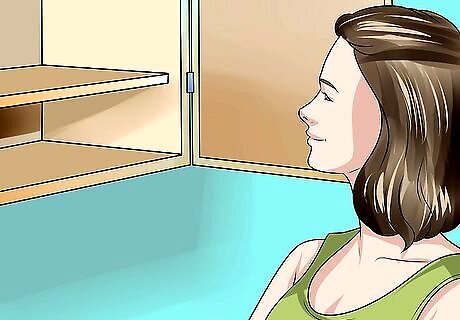
Clean out your cupboards. One surefire way to make sure you don't eat unhealthy foods at home is to not have them in your home. If you're really serious about keeping these foods out of your diet, get rid of them! You can't eat what isn't there. If you eat your meals at home and only have healthy ingredients to prepare them with, that's all you'll eat.
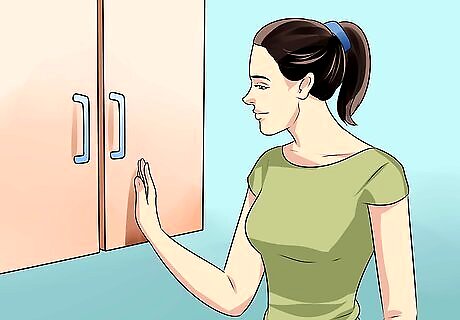
Keep unhealthy foods out of sight. As the old saying goes, "out of sight, out of mind." If you aren't willing to toss out everything unhealthy, move it so that it is less visible and accessible. Studies show that people consume candy in transparent containers like glass jars more quickly than candy in opaque containers. If you keep potato chips in the house, keep them in a closed cupboard.
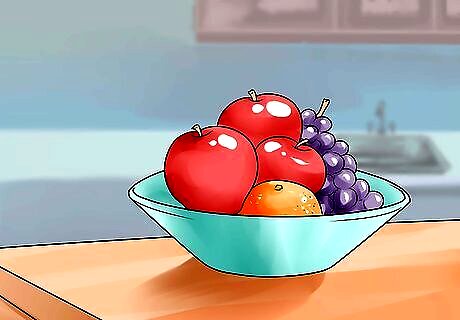
Keep healthy foods accessible. The flip side of hiding your junk food is making sure that healthier options are more easily seen and accessed. This will increase the likelihood of eating them instead. For example, keep fruit out on the counter. If there are apples in plain sight, but the potato chips are hidden away, this will make you more likely to go for the fruit. Take some time to do food prep on the weekends by washing and cutting fresh vegetables that will then be available to quickly snack on throughout the week. For example, carrots, celery, zucchini, and broccoli. Try washing and freezing some grapes that have been removed from the vine. Frozen grapes make a great healthy snack when you are craving something sweet.
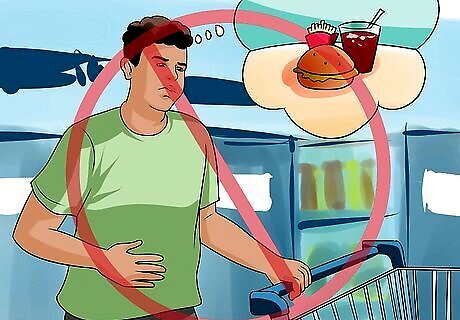
Don't go shopping on an empty stomach. Research shows that when you go to the grocery store hungry, you are more likely to make impulse buys. This often means unhealthy food. Try eating a small, healthy snack just before a trip to the grocery store. This will reduce the temptation to make junk food impulse purchases. Once again, if you don't buy unhealthy food, you can't eat it. Go to the store with a full belly and make good choices. Planning what you are going to eat for the week and shopping accordingly is also a great way to make healthy eating easy.


















Comments
0 comment